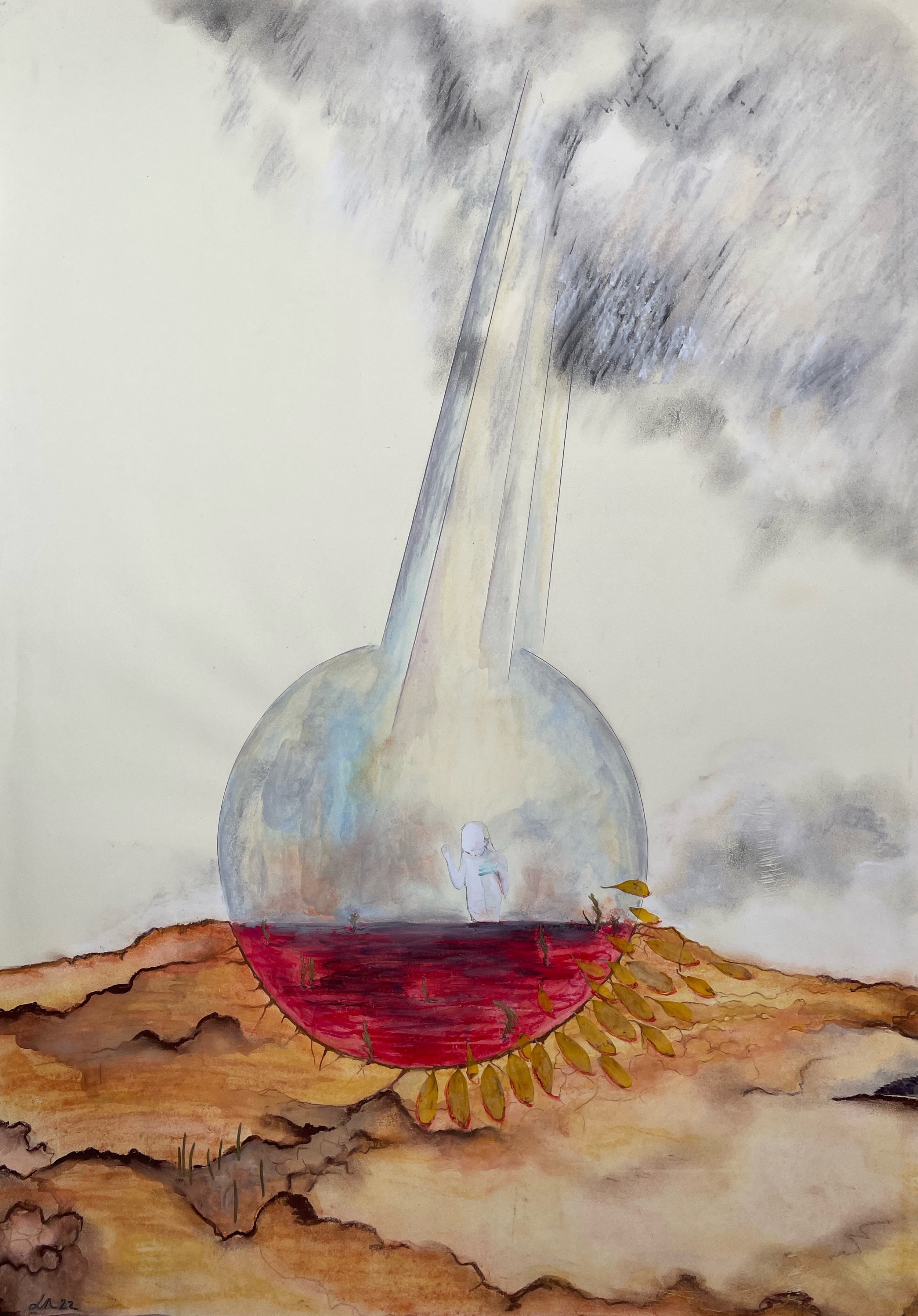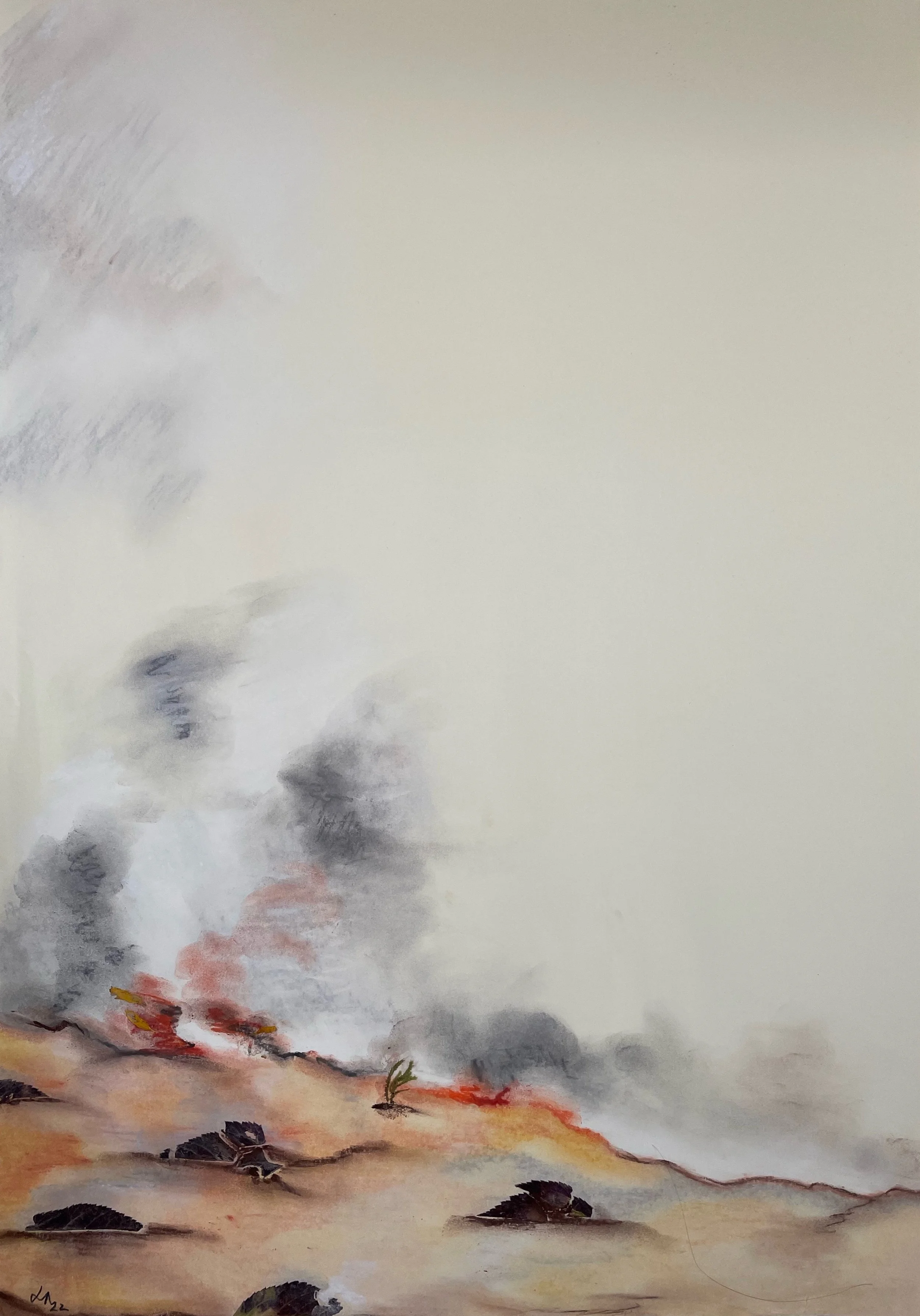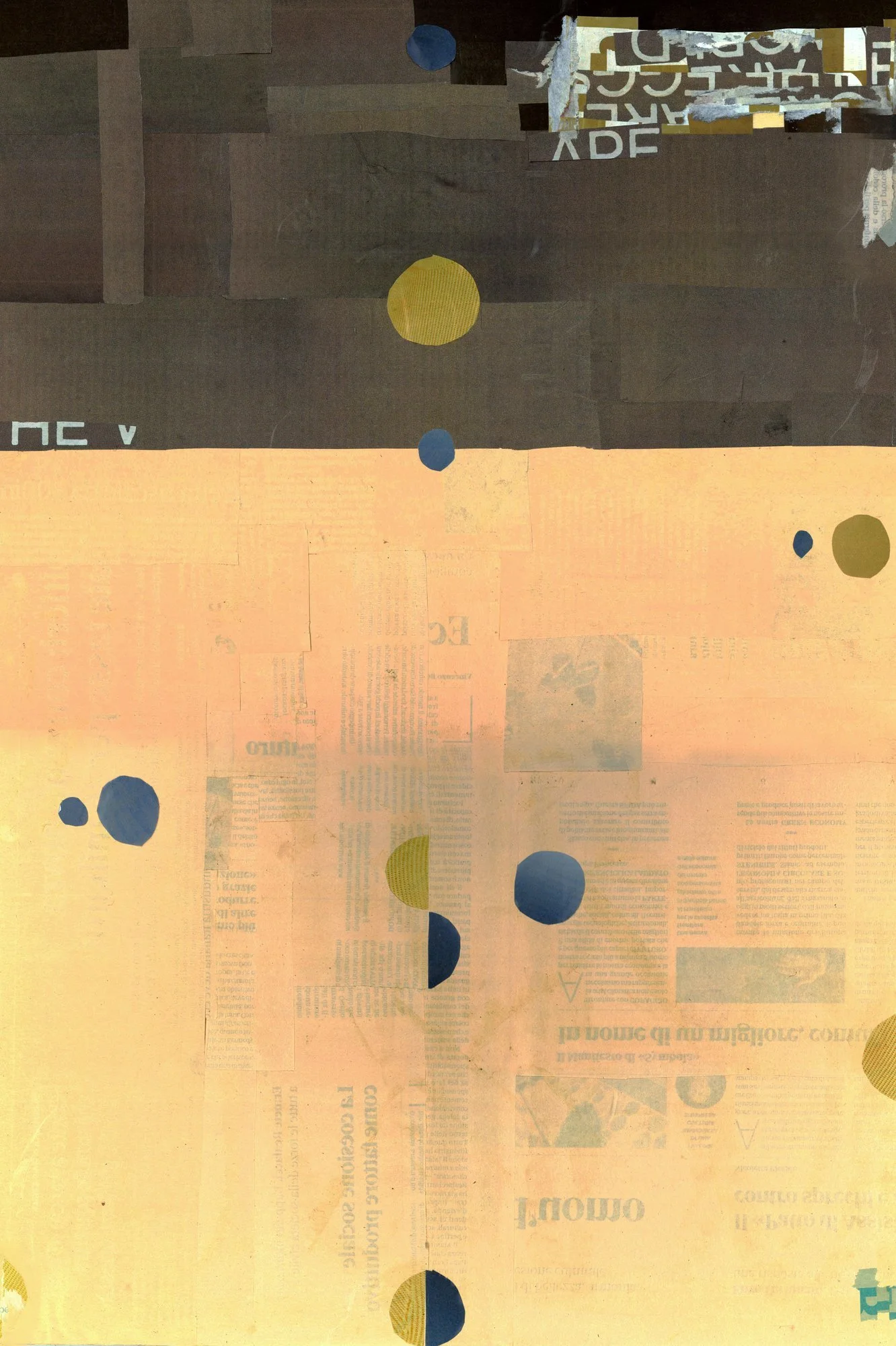10 Questions with Lavinia Munteanu
Born in 1981 in Romania, Lavinia studied architecture in the South of Germany, where she is currently living together with her children. As a PhD candidate in the field of architecture theory (Graz University of Technology, Austria), she is interested in spatial concepts and their development over time. As a freelance visual artist and author, she explores the common ground between architecture, art, and literature. Her sources of inspiration, ranging from history to depth-hermeneutics, go through various stages in the process of artistic research until they become a series of images or texts. Although drawing is her main artistic medium, she is about to discover the realms of performance and video installation — with an outcome that keeps surprising her.
Lavinia Munteanu - Portrait
ARTIST STATEMENT
Lavinia believes that visual images have the ability to represent the unrepresentable. They can capture hidden memories, unthought ideas, and fragile daydreams. It is the unconscious that interests her most in her work, including its representations of the body, its interaction with the environment, and the question of whether it operates through distinct categories (inside/outside, male/female) or rather through modes of transition. Grasping these within the artistic process is her aim.
The Tunnel, collage © Lavinia Munteanu
INTERVIEW
First of all, introduce yourself to our readers. What inspired you to pursue a career in visual arts and architecture?
I think it was the playful nature of both art and architecture that attracted me. As a child, I used to build play structures made up of clay, wood, or stone and draw the world around me. Both the visible (people, nature, buildings) and the invisible (wishes, fears, dreams) took shape for me on paper or while I was playing with different objects. I think it was a way to decipher the complex reality in which my family and I lived. By drafting alternative scenarios, I could also better grasp it. Also, being creative gave me a sense of being able to actively change whatever was not easy to deal with. This still is the case today: both art and architecture transform the world we live in (art for the better, architecture for the better or worse), and every time a work of art is done, it leaves a "trace" in the world that has not been there before.
How does your background and upbringing in Romania influence your artistic work?
I was born 1981 in the context of a totalitarian communist regime. This had a strong impact on me, both as an individual and as an artist. The creativity of my childhood was perhaps also a reaction to the rigid social context in which I grew up. There's absolute freedom expressing itself in the clay play structures or drawings of a child. Up to the present day, I am sensitive regarding injustice and abuse of power; I quickly trace them wherever they happen, no doubt because I have experienced both. And then, art and architecture have an egalitarian claim. It might well be that I chose a profession that tends towards individualism and independence because of my biography. Being something like a "small wheel" in a "big machine" wouldn't suit me. Making art, on the other hand, is a genuine, uncensored way of expressing oneself.
Burning Bird, collage © Lavinia Munteanu
Transmutation 1 © Lavinia Munteanu
Transmutation 2 © Lavinia Munteanu
On the contrary, how do your studies in architecture theory shape your current visual art practice?
My studies in architecture theory led to a reflection on the nature of space and time. We usually take space for granted - it's all around us by default - but when thinking about it, it becomes obvious that we are actually "making" the spaces and places around us to what they are. We are constantly acting upon them, either in a physical way by changing the environment we live in (from one's home to the planet as a whole) or in the abstract field of ideas. Each dtime and society has its own space concepts as well as its specific use of space. We can try to grasp both by carefully studying the way people are embedded in space in a certain geographical and historical context. This also means giving up the Eurocentric perspective on space and asking apparently simple questions like: How did or still do these particular people make space their own? What "traces" did or do they leave behind, and what could be their meaning? Is there a concept of the center as opposed to the periphery at work in their paradigm, or rather different spatial patterns? And finally, how do other ideas - whether social, political, and so on - get entangled with these spatial patterns? My study as related to such questions made me more sensitive about the use of space in my artistic projects, especially in my performances, in which I engage with an object or a place by performative means.
Let's talk about your work. Can you explain your creative process from initial inspiration to the finished piece?
Initial ideas emerge often while reading different texts or historical sources. This is like the first pilot light in the creative process. The initial idea or image eventually undergoes several steps, the first one being a sort of "incubation" in which it will be unconsciously "amplified." Something happens here that I cannot explain: the idea or image turns into something else. The result becomes a part of my own artistic realm, although it somehow remains related to the source. The transformation will often take place spontaneously - by means of an unexpected thought, a sketch, or a dream. The next step is its incorporation into my conceptual frame: that is, into the context of my artistic practice as a whole. A sketch might, for instance, become an elaborate drawing in a series I have been working on for a while, or a new thought will relate to already studied concepts and slowly become part of an essay. The most spontaneous - and the most direct - transformation process of an initial spark into a work is, for me, in a poem. I rarely work on the first draft of a poem because I love its freshness and undisguised nature.
Son of Humans © Lavinia Munteanu
Daughter of Gods © Lavinia Munteanu
In your statement, you mention medieval literature and iconography as sources of inspiration. How do you incorporate those into your work?
In medieval iconography, for me, Claude Lévi-Strauss's "wild thinking" is at work, as opposed to "tamed thinking." This fascinates me. The unconscious strongly manifests itself there, and I often try to take over this "spark" in my own works without setting them on fire. There can be too much unconscious, I think, or too much direct and unfiltered unconscious "material" in an object, an image, or an action. A bit of "taming" is necessary. And then, of course, there is the alchemical cosmos of the "opus magnum" (the Great Work), which describes the journey from the operational to the speculative alchemy. This journey is not only related to the transformation of metals into gold but also to the development of human personality. The alchemical search for perfection is the ideal of self-fulfillment and belonging to the world without giving up one's own particularity. Art itself is a transformation process in which the general and the particular become related within a peculiar connection.
Are there any specific artists, writers, or schools you particularly look up to?
Over the years, I have been inspired by different artists, writers, and thinkers. Some of the artists who most inspired me are anonymous, like the author of the Apocalypse in the "Biblia Pauperum," probably realized between 1340 and 1350 in a Benedictine monastery in Erfurt, Germany. Or the author of the "Augsburg Book of Miracles", realized between 1545 and 1552, and who was either Hans Burgkmair the father or the son (or someone else). I love this ambiguity of authorship. As for literary sources, I would first mention John Milton's "Paradise Lost" (1667). This work remains something like an "oven" for me from which sparks of wild thought still arise. In the field of philosophy, I have been mostly inspired by phenomenological thought, especially by Maurice Merleau-Ponty and Emmanuel Levinas. Maurice Merleau-Ponty speaks of "flesh of the world "to which we belong as humans, inescapably interwoven with it through our senses, thinking, and acting. For me, creating is exploring the "body" of the world and also reassessing my belonging to it. Since childhood, I have literally "drawn" and "written" myself into the "flesh of the world," leaving traces behind me, traces that I am further developing and extending. What I have been working on is not a static body of work but a constantly changing environment, which I have not created all by myself: other persons, places, and objects are an essential part of it. Last but not least, psychoanalysis as a method of critical theory is the background against which my search for manifestations of the unconscious takes place.
The Wall, collage © Lavinia Munteanu
Ultimately, what message do you hope to convey through your artwork?
I don't think I have something like a "direct message." If at all, I attempt to get other persons involved in my own search and engaged with whatever this search produces, either intellectually or - even much better - in an emotional way. If my works are the cause of a memory, a new thought, or a feeling, I have already achieved a lot.
What are you currently working on, and what are your future plans?
I always work on multiple long-term projects simultaneously. The one I am concentrating most on at present is the continuation of the "Mandragora" performance series. In this work, I am inspired by the epic of Gilgamesh and the writings of Agrippa von Nettesheim (1486-1535). This project is an attempt to re-actualize mythical actions that relate human beings to the non-human and more-than-human world.
Is there any new medium or technique you would like to experiment with in the future?
I would love to experiment with stone sculpture, but I would be a total beginner in the field.
And lastly, where do you see yourself and your work in five years from now?
In five years' time, my traces within the "flesh of the world" will become even deeper.
Artist’s Talk
Al-Tiba9 Interviews is a promotional platform for artists to articulate their vision and engage them with our diverse readership through a published art dialogue. The artists are interviewed by Mohamed Benhadj, the founder & curator of Al-Tiba9, to highlight their artistic careers and introduce them to the international contemporary art scene across our vast network of museums, galleries, art professionals, art dealers, collectors, and art lovers across the globe.






















